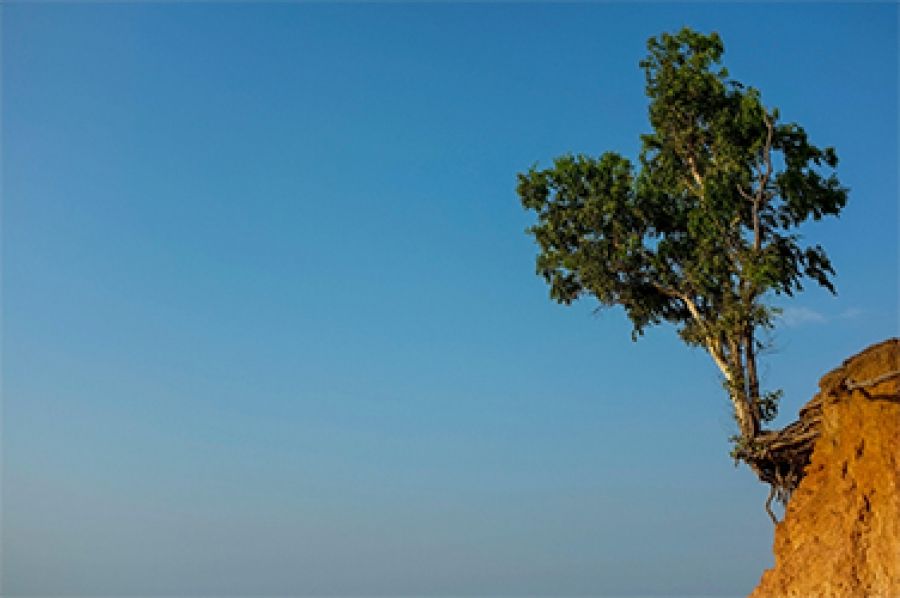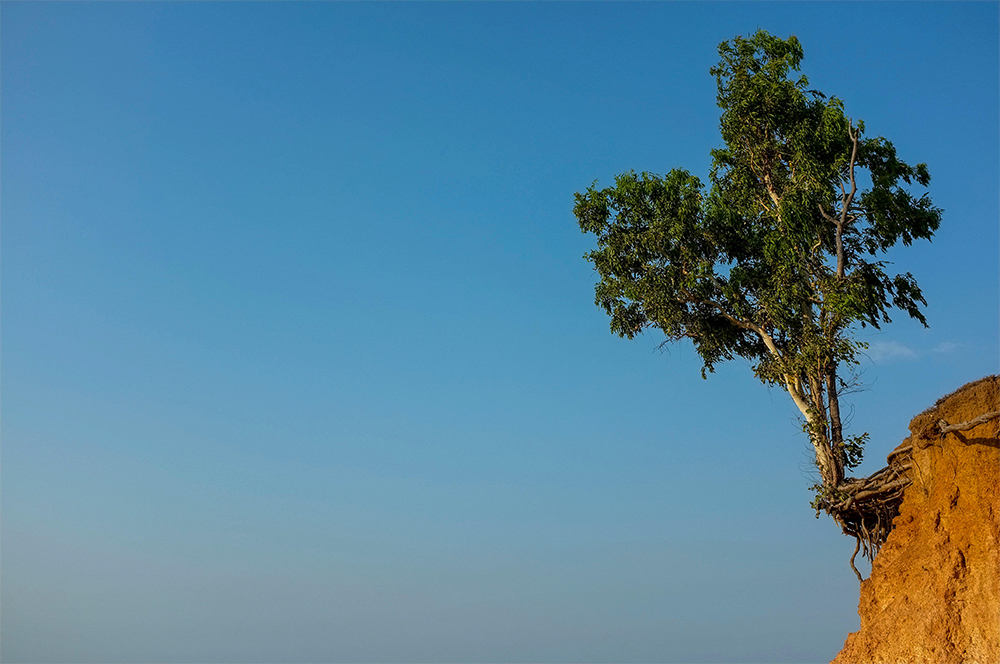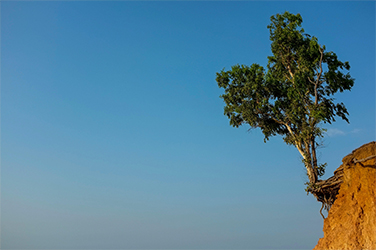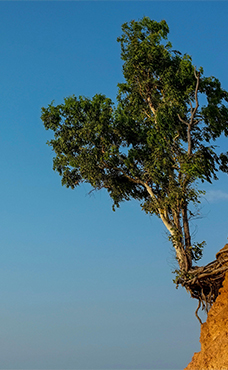
- Free Article: No
- Contents Category: Language
- Custom Article Title: A rubber cudgel of a word: The speciousness of resilience
- Review Article: Yes
- Article Title: A rubber cudgel of a word
- Article Subtitle: The speciousness of resilience
- Online Only: No
- Custom Highlight Text:
In his concession speech on election night, after a perfunctory Acknowledgment of Country and a fulsome acknowledgment of Australia’s defence personnel, past and present; after hymning our ‘functioning’ democracy with reference to Ukraine, and intimating that without him we imperil ourselves; after mentioning the ‘great upheaval’ of recent years but failing to use the words pandemic, floods, lockdown, bushfire, or climate change; and after reassuring us that he still believes in miracles, outgoing Prime Minister Scott Morrison declared that ‘the one thing’ he had ‘always counted on’ was ‘the strength and resilience and character of the Australian people’.
- Article Hero Image (920px wide):

- Article Hero Image Caption: (photograph via Alamy)
- Featured Image (400px * 250px):

- Alt Tag (Featured Image): 'A rubber cudgel of a word: The speciousness of resilience' by Anwen Crawford
Hansard records 115 occasions on which Morrison has used the word ‘resilience’ in the House of Representatives, beginning in June 2011, when, as the member for Cook, he thanked constituents for the resilience they had shown in turning out during ‘inclement weather’ for a Cancer Council fundraising event. In 2014, during his stint as Minister for Immigration and Border Protection, he praised ‘our social resilience and our cohesion as a country’, and in 2016, as Treasurer, ‘our economic resilience’. Resilience is the liquid sealant of contemporary corporate thinking; the word is as plastic in its applications as it is fluid in the mouth.
The first time ‘resilience’ enters Hansard is in March 1908, when Senator John Henry Keating of Tasmania discussed tariff protections for ‘Tool Handles, unattached’ that had been manufactured in the Commonwealth. ‘Notwithstanding the contention that many imported woods are exceptionally suitable,’ Keating observed, ‘we have native timbers possessing the peculiar resilience necessary.’ The connection between resources and economics – the transformation of a thing like a tree into a commodity like an axe handle – continues to be present in more recent uses of ‘resilience’. In April 2022, Senator Rex Patrick asked Senator Anne Ruston, in a Senate Estimates hearing on the Murray–Darling Basin Plan, about the likelihood of government intervention when water for growing food crops proves unobtainable during drought, because the water allocation has been bought by profit-making, cotton-growing agribusiness: ‘What’s the government’s view? Is it just simply to let the market do what it needs to do versus national interest, which a farmer can’t determine, by making sure we have the right mix of crop and the right resilience across the basin in respect of food production?’
Resilience across the basin. One of the characteristics of ‘resilience’ now is the scale of thing it describes: a million-square-kilometre river system, or the whole population of Australia. I am coerced into resilience by being one of millions to whom the word ‘resilience’ is applied without distinction, which is why it repels me; we have become as abstract as money. ‘I would contend that in the majority of the cases, the market operates best,’ Senator Ruston said, in reply to Senator Patrick’s question about how farmers might get fodder to their drought-starved animals. Ruston conceded that governments can take action ‘under exceptional circumstances’, but her now former government was not ‘in the business of intervening and telling people how they should be using their productive assets’. The ‘productive asset, obviously’, Ruston elaborated, ‘is the water and the land’.
Resilience and resile both descend from the Latin intransitive verb resilire: to leap or to spring back, to recoil, to rebound. Resile entered English first, in the early sixteenth century, and, according to the Online Etymology Dictionary, is also related to the obsolete French word resiler, ‘withdraw from an agreement’. The verb retains that meaning today, in the sense that to resile is to change one’s mind, though instinctively, I want to use resile like I use the word repel: I am resiled by – I recoil from – resilience.
By the time of the Industrial Revolution, that epoch of cast iron and concrete, steam trains and safety elevators, ‘resilience’ had a specific application in mechanics as the measure of stress that a substance could withstand. ‘The Resilience of a body is the amount of work required to produce the proof strain,’ wrote Thomas Alexander in Elementary Applied Mechanics, which was published in 1880. Alexander was a Glaswegian civil engineer employed at the Imperial College of Engineering in Tokyo during the 1870s, when Japan was rapidly modernising, and his book was written for engineering students. ‘If a solid be strained beyond a certain degree, called the proof strain,’ Alexander wrote, ‘it does not regain its original length when released from the strain.’
The solid is still trapped inside ‘resilience’ like a ghost inside a wall; we feel the ghost of the wall. We are the wall, we are a load-bearing column each time we are thanked by employers or by governments for demonstrating our resilience, each time we are asked to be resilient – though the asking is more like telling – through another round of funding cuts, wage freezes, and ‘efficiency dividends’. ‘Resilience’ was uncommon in English until about 1980, the dawn of the neoliberal era, when its usage began to chart a steep, then ever-steeper, upwards trajectory.
We are flexible. We can adapt. We will adjust. Weary bodies and broken hearts show through this Latinate flattery, and in this, Morrison’s concession speech was typical – nay, exemplary – of what such language reveals about what its users are trying to disguise. How fortunate that the now former prime minister should find himself alive at a time when, should his house burn down in a bushfire, he can turn to the National Recovery and Resilience Agency, a federal government body established in May 2021 with a view to ‘coordinating … Australia’s national capability to build resilience’, or perhaps to the volunteers of the Australian Resilience Corps: ‘our aim is to create a culture focused on building resilience’. All that is solid melts into air and et cetera; the material with which to build resilience turns out to be resilience itself, if only we can adjust our attitude, prove our aptitude for it. The Australian Resilience Corps is a partnership between NRMA Insurance and the Minderoo Foundation, the latter of which is chaired by billionaire mining magnate Andrew ‘Twiggy’ Forrest. How nice to feel the lubricant of immense wealth as one shifts into resilience-building gear.
Early in 2020, as Covid-19 first began to circulate in Wuhan, an abandoned accommodation village in Howard Springs, close to Darwin, was repurposed by the federal government as a quarantine camp. The village had been built in 2012 for fly-in, fly-out workers at a gas plant owned by the Japanese energy company Inpex. It was renamed the Centre for National Resilience, ‘resilience’ in this context barely plugging the fractures of history: fossil fuel extraction, native trees cut down for axe handles, frontier violence, border politics, the whole bloodied lot. Resilience, in its current application, is a rubber cudgel of a word: it might not leave bruises, but the injuries are lasting all the same.



Comments powered by CComment